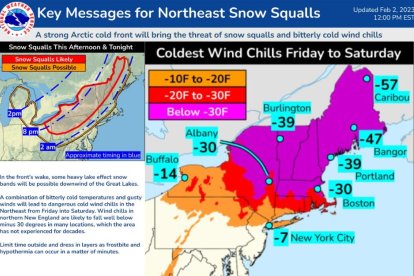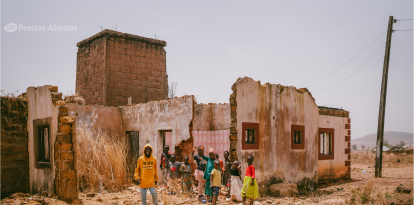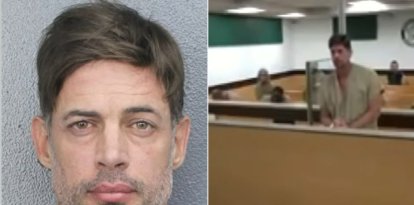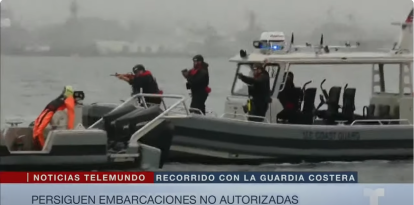Record low temperatures as extreme cold arrives to the Northeast
New England and New York will experience temperatures between -30ºF and -60°F. The record low in Boston is -14°F, recorded in 1943.

NWS Weather Prediction Center/ Twitter.
An arctic airmass will cause record-low temperatures in parts of the Northeast this weekend. Extreme cold puts the New England region at risk, where several cities are already on "wind chill alert" and activated "warming shelters." The National Weather Service warned:
The city of Boston is bracing for temperatures so low that they could break records. AccuWeather Senior Editor Jesse Ferrell commented:
Boston could see temperatures as low as -30º F. The lowest temperature ever recorded in the city was -14ºF, on Feb. 15, 1943.
Record-breaking temperatures
Extreme cold will arrive over the weekend across northern New England (Maine, Vermont, New Hampshire, Massachusetts, Connecticut and Rhode Island) and will spread to New York. Temperatures between -30°F and -60°F could be experienced in the Empire State early Saturday morning.
Poor conditions could also reach Washington, which may see temperatures around 0°F.
New Hampshire will see the most extreme conditions. The summit of Mount Washington is bracing for temperatures as low as -85°F, according to meteorologist Sam Lillo of the University of Oklahoma:
The polar vortex and the arctic blast
An arctic blast is a cold front from the Arctic that brings low temperatures, snowfall, rain and strong winds that are pushed southward by atmospheric currents. Meteorologist Ryan Maue explained to the AP:
The current Arctic blast formed from a polar vortex, an area of low pressure and cold air that is constant throughout the year but weakens in the summer and strengthens in the winter. The polar vortex is located in the troposphere, the layer of the atmosphere that is closest to the Earth.
RECOMMENDATION





















